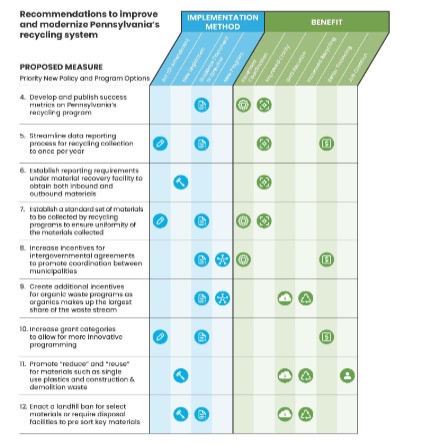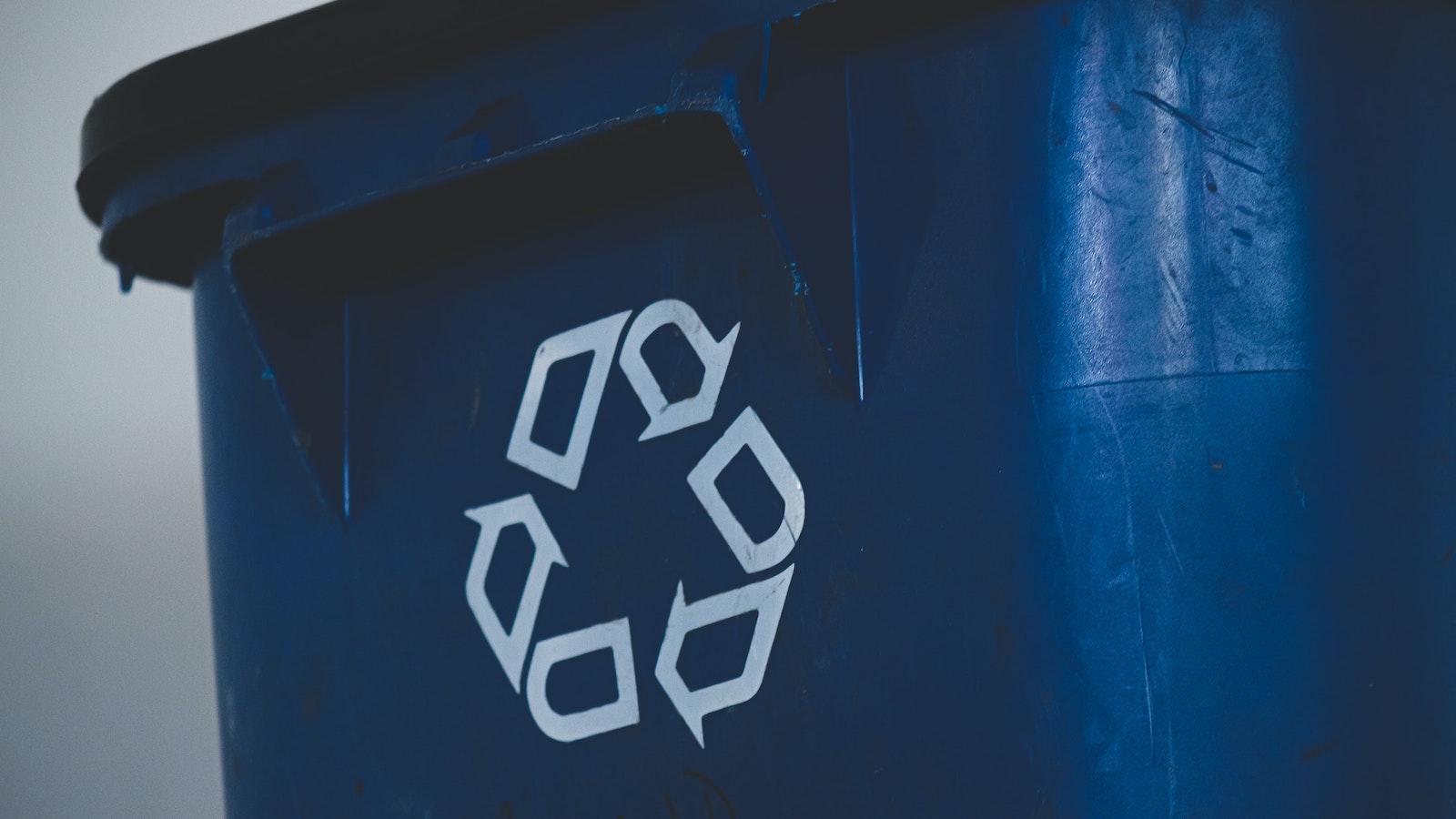
Act 101 and Recycling in Pennsylvania: Past, Present, and Future
Act 101 was signed into law in 1988, jump starting recycling, reuse, and waste reduction in Pennsylvania. The bipartisan legislation created the most extensive recycling program enacted by any state at that time.

Executive Summary Act 101 Purpose and Goals Act 101 was signed into law in 1988, jump starting recycling, reuse, and waste reduction in Pennsylvania. The bipartisan legislation created the most extensive recycling program enacted by any state at that time. Its purpose was to:
● Establish and maintai n a State and local program of planning, technical, and financial assistance for comprehensive municipal waste management;
● Encourage the development of waste reduction strategies/programming and recycling as a means of managing municipal waste, conserving resources, and supplying energy through planning, grants, and other incentives; and
● Protect the public health, safety, and welfare from the short – and long – term dangers of transportation, processing, treatment, storage, and disposal of municipal waste. To satisfy these objectives, Act 101 established four main goals. The goals and the extent to which they have been achieved are summarized below.


Although not all the goals established in Act 101 have been achieved, the Act substantially improved recycling in Pennsylvania. As of the writing of this report, there are 1,141 curbside recycling programs and 814 drop off recycling programs in the state . In 2018 the 5.47 million tons of material recycled offset the equivalent of more than 9.2 million tons of carbon dioxide, the equivalent of removing more than 2 million vehicles off the road in one year.
Unintended Impacts of Act 101
However, the envir onmental landscape has changed dramatically over the years and there have been few modifications to the Commonwealth’s solid waste management system in response to th is new landscape . Packaging waste streams have evolved due to an increasingly throwaway economy , a greater reliance on flexible plastics, and municipalities have moved towards single stream recycling collection. At the same time, in recent years many local and national government agencies have shifted focus from basic waste management to more ambitious goals through zero waste targets and circular economy strategies. Additionally, the importance of effective waste reduction and diversion to reduce greenhouse gas (GHG) emissions continues to grow .
Over the past decade , several reviews of Act 101 found that provisions within the Act have created unintended impacts limiting Pennsylvania’s waste management and recycling system. Several are outlined here ; the full report provides additional examples. Act 1 01 unintentionally creates limited uniformity and coordination between municipalities. For example, municipalities mandated to provide recycling only need to collect three out of a list of eight materials. This makes it difficult to coordinate recycling me ssaging and education across the Commonwealth and may lead to valuable recyclable materials left out of collections.
The narrow types of funding opportunities within Act 101 pose another challenge . Act 101 currently includes only four grant categories , making it hard to fund innovative recycling activities to manage additional waste streams , such as organics and textiles .
The State has made limited updates to Act 101 since 1988. Because the Act has not been regularly updated , it cannot resolve current and emerging priorities and challenges in waste and resource management, including aiming for large scale waste reduction goals and designing systems to support a circular economy.
Additional challenges hamper the Act as well, keeping the law from achieving its full potential in its 33rd year.
Landscape Analysis
This report reviews best practices in other jurisdictions to identify what measures can support the Commonwealth’s work towards zero waste and encourage a circular economy.
Policies outside of Pennsylvania as well as some started at the local level provide potential paths to improve Act 101. For example, in 2012, Vermont passed the Universal Recycling Law (Act 148) which introduced a landfill ban on various material s including paper, cardboard, aluminum, steel cans, glass bottles and jars, and plastic containers with resin codes #1 or #2 (PET and HDPE). Additionally, in the U.S., 33 states have adopted 119 producer responsibility laws, addressing 14 types of consum er products such as packaging, electronics, and paint . Several of these are outlined in our report.
In addition to policies and programs outside Pennsylvania, there are several within the Commonwealth that can be expanded or used as learning opportunit ies for future programming. In Philadelphia, starting October 1 st , 2021, retail establishments are prohibited from providing single use plastic bags and paper bags which do not meet specific requirements. Also in 2021, Pittsburgh established a pilot program through executive order which promoted deconstruction of some blighted properties rather than removing them sole ly through demolition.
Recommendations
To improve and modernize Pennsylvania’s recycling system , this report puts forth a set of 15 policy recommendations. These include recommendations that can be implemented through the enforcement of existing Act 101 provisions, some that require new policy and legislation, and several more longer – term policy goals for the Commonwealth to build towards . The suite of options summarized below, if implemented, will strengthen Pennsylvania’s recycling programs and increase the rate of materials being recycled , help reduce waste, improve coordination and clarity, reduce greenhouse gas emissions, and support the creation of local jobs.
Act 101 provides a solid foundation for waste management and recycling in Pennsylvania; the first set of recommendations involves enforcing a set of existing provisions . Many of these recommendations ca n be completed through guidance documents or executive order.

The second set of recommendations includes new policy and program options, some of which may require new legislation. These new policies and programs seek to resolve many of the unintended negative impacts of Act 101, to address antiquities in the law, and to create a recycling framework which can meet the current challenges in the consu mer and recycling marketplaces.

The final set of recommendations provides a path to wards ne w waste reduction policies

Topics
Find Out More

Letter in Support of Electronic Waste Recycling
Testimony in Support of HB 1607: Expanding E-Waste Recycling in Pennsylvania


